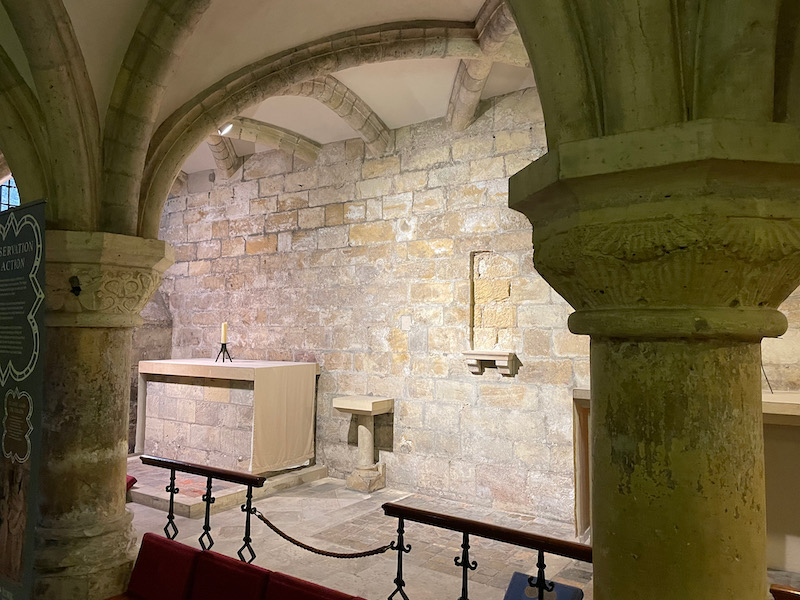Our Blog - York Minster
The current Cathedral and Metropolitical Church of Saint Peter, better known as the York Minster, was completed in 1472 after several centuries of building. The first recorded church on the site dates back to 627, and there have been many different churches throughout the centuries. There was a fire in 1984 and the roof of the South Transept was deliberately collapsed by firefighters in order to save the rest of the building. It was repaired in 1988. Another renovation program took place between 2007 and 2018.
It is devoted to Saint Peter, and is the 2nd largest Gothic cathedral in Northern Europe. It has an octagonal chapter house attached to the north transept, a central tower and two towers at the west front. This is the main entrance, and you can see the two towers along with the various windows that have nice latticework. And then one view along the side.
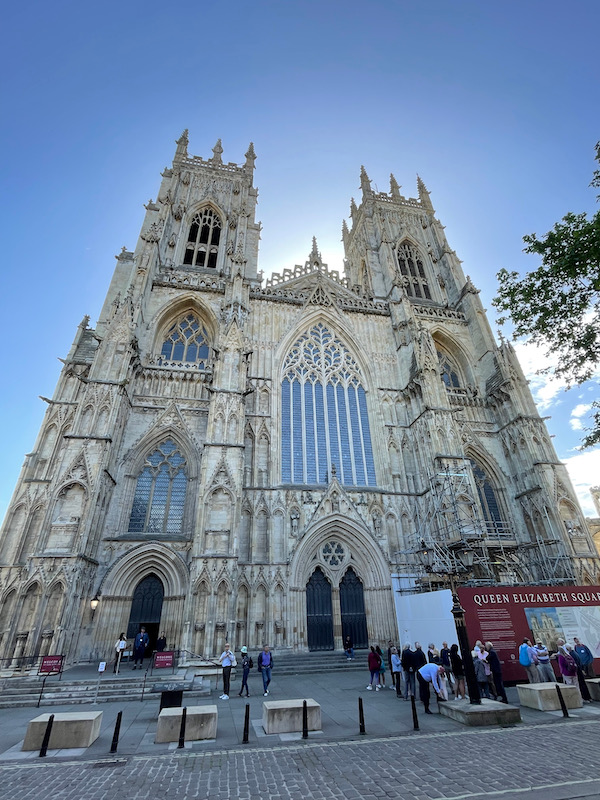
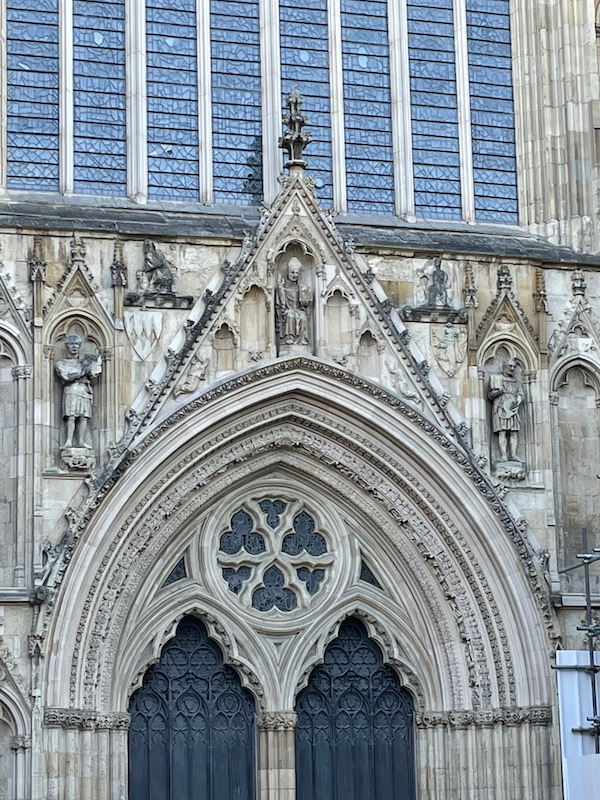
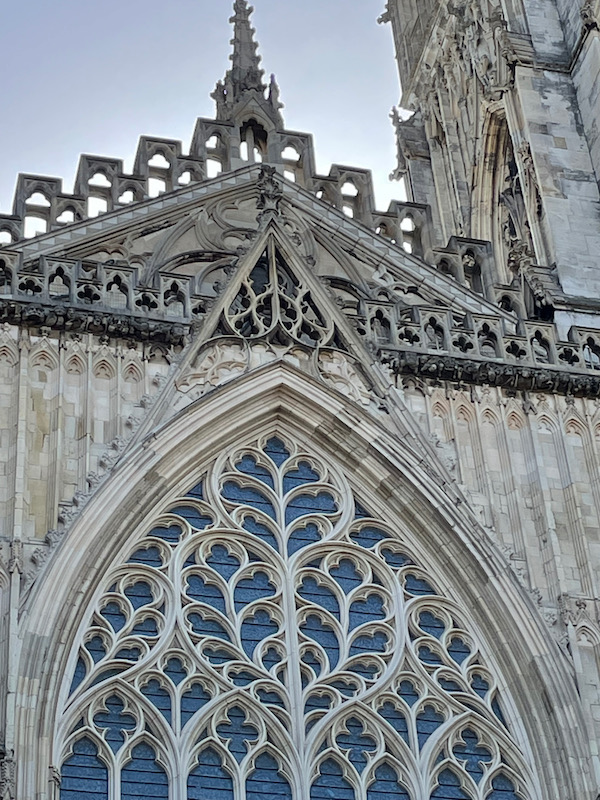
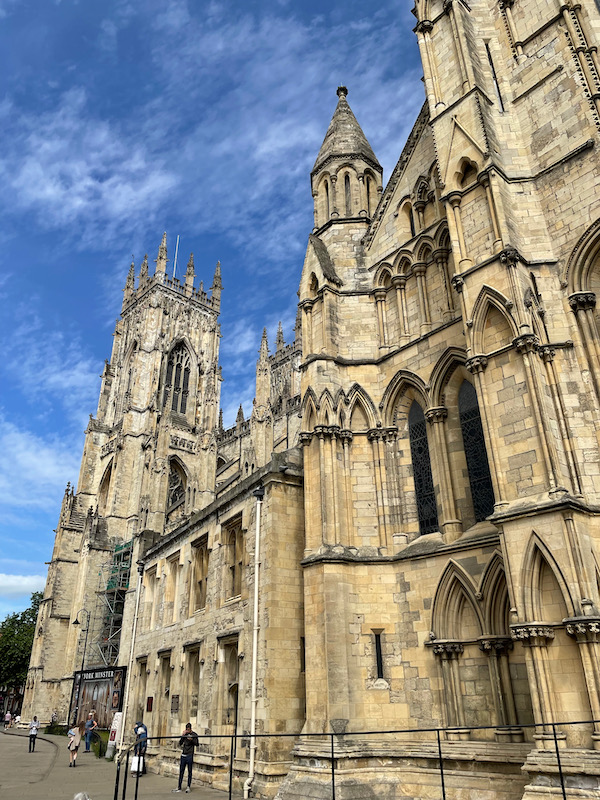
The interior is dominated by the huge nave, which is the widest Gothic nave in England. Everything is very clean and colorful after the recent renovations.
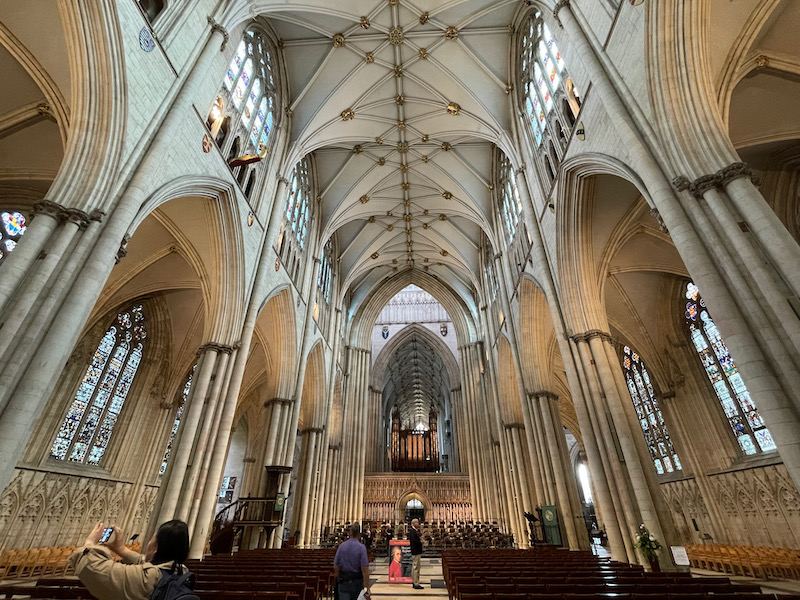
Turning around to look backwards, this is the West window, built in 1338. It is known as "The Heart of Yorkshire" as you can see a heart-shape in the top part.
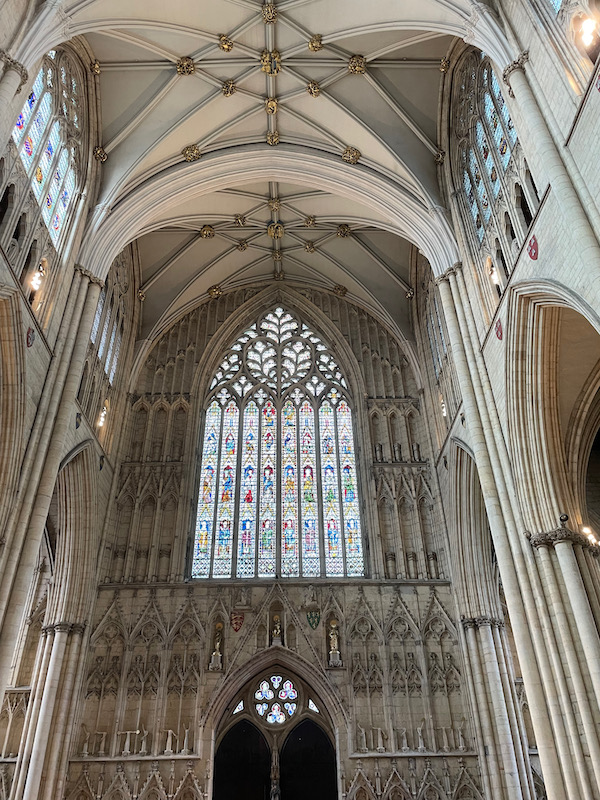
This window definitely caught my eye ... the Five Sisters window in the north transept. Each lancet is a "sister" and each one is 50 feet tall. Dating from around 1260, it is the oldest complete stained glass window in the cathedral. The windows are not all that colorful, but instead a silvery green color. It is currently dedicated to all the women who lost their lives in the World Wars of the 20th century.
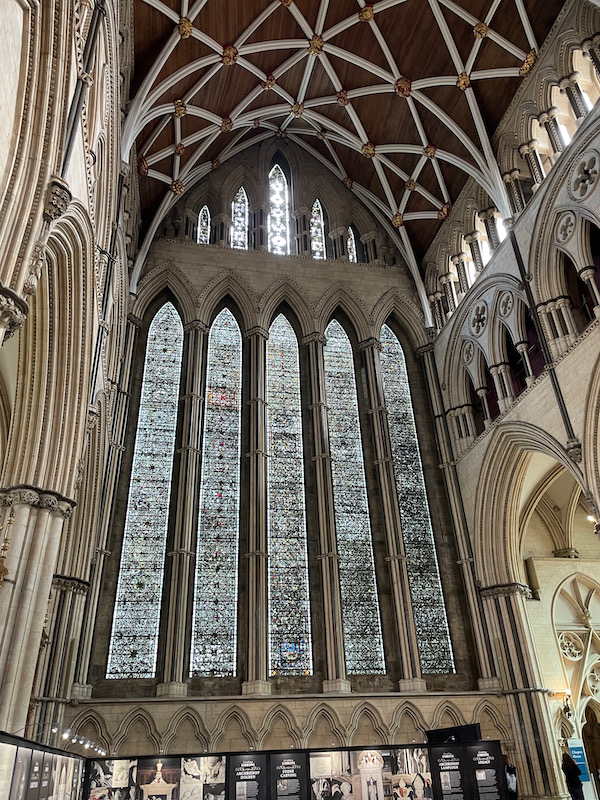
The south transept contains a rose window commemorating the end of the War of the Roses in 1486. The fire in 1984 caused the panels of the Rose window to shatter into more than 40,00 pieces. They remained in place, thankfully, and it was possible to restore it.
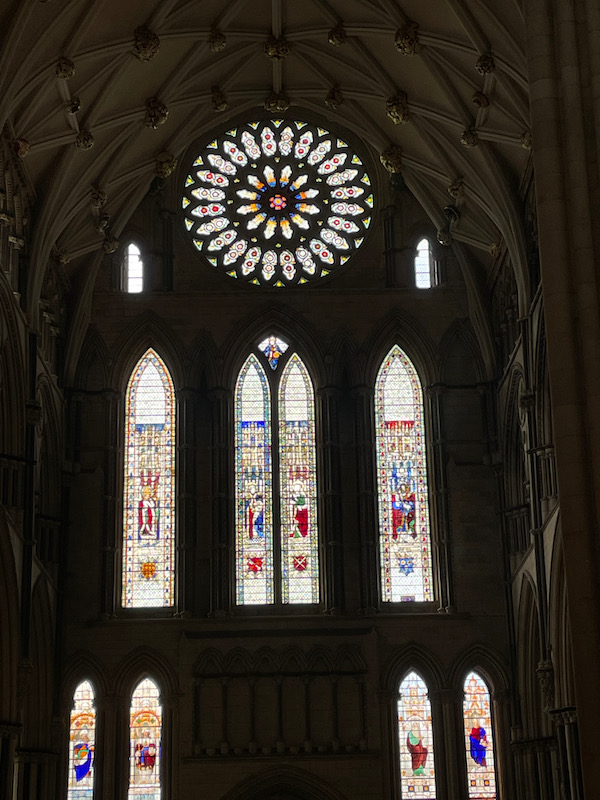
And last bit of stained glass, a few close-up pictures from windows around the cathedral.
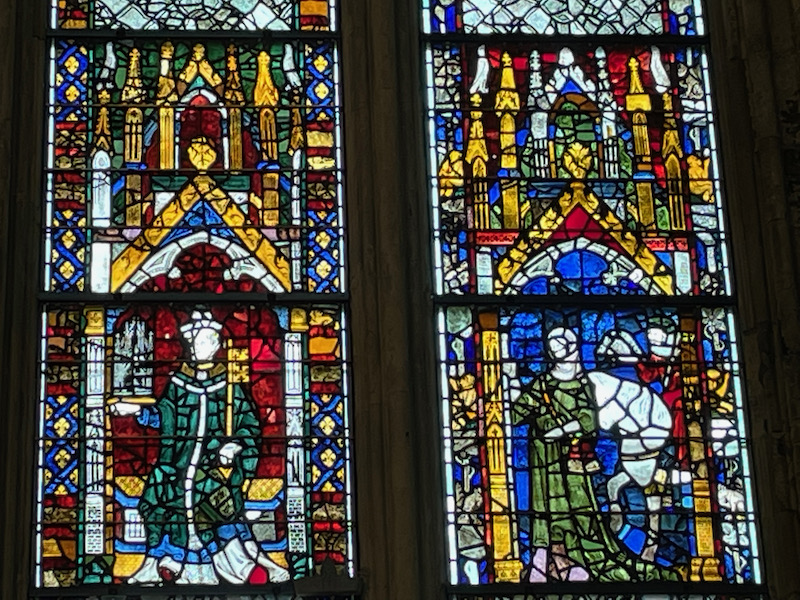
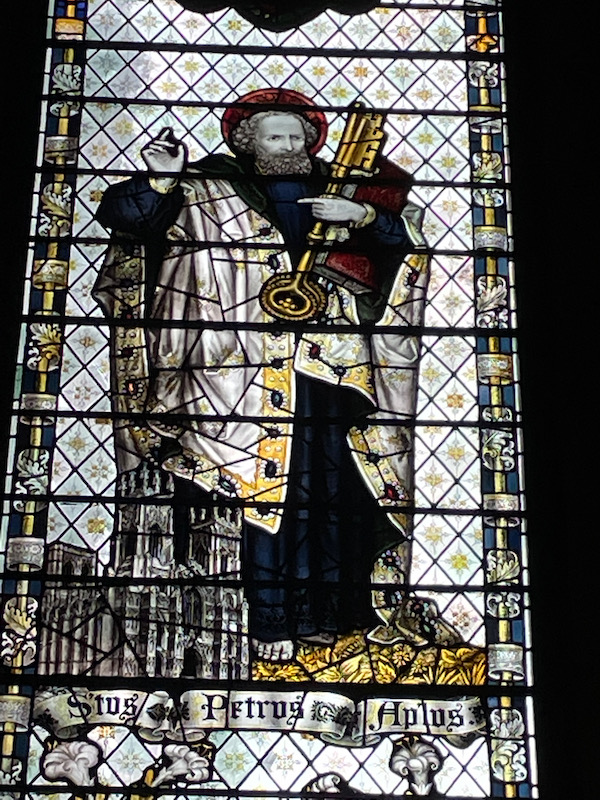
I thought this was an interesting clock ... the clock chimes every quarter-hour by two 400-year-old figurines, Gog and Magog, who hit the upright metal pieces, which in turn, chime.
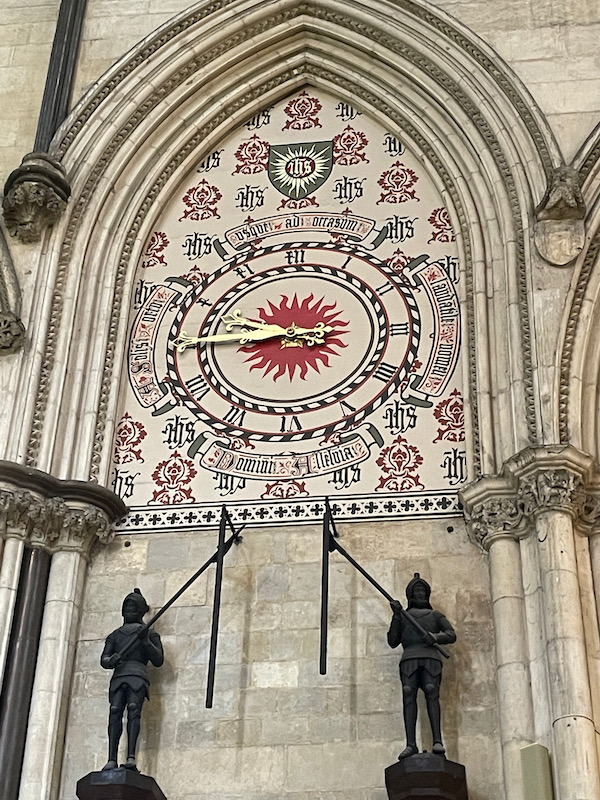
Here is the rood screen (called the Kings Screen) and one side of the organ. The screen has 15 sculptures representing 15 kings of England, from William I to Henry VI of England. The organ, which dates from the 15th century, separates the nave from the choir.
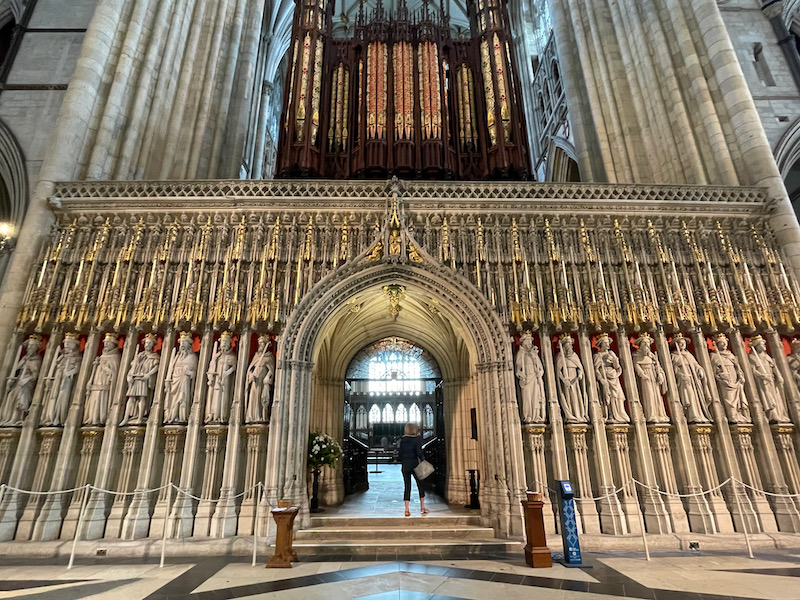
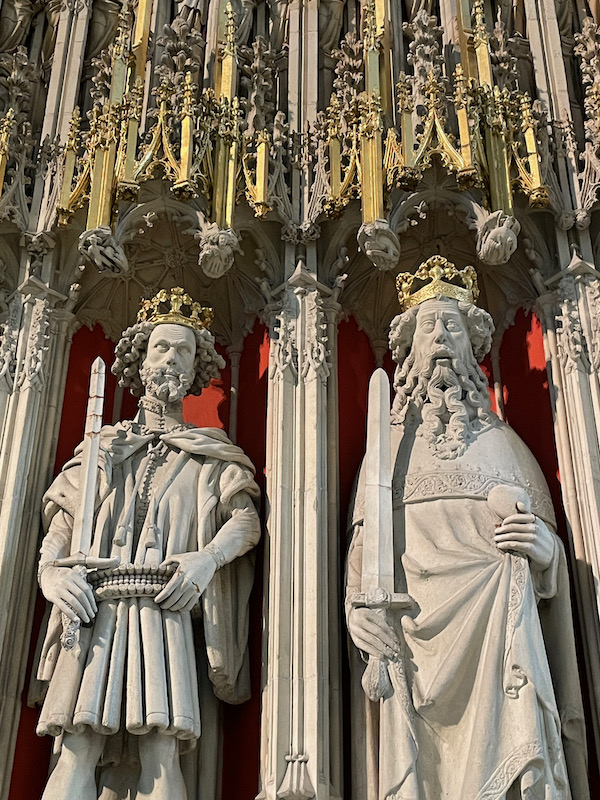
And here you see the choir stalls and the organ from the other side.
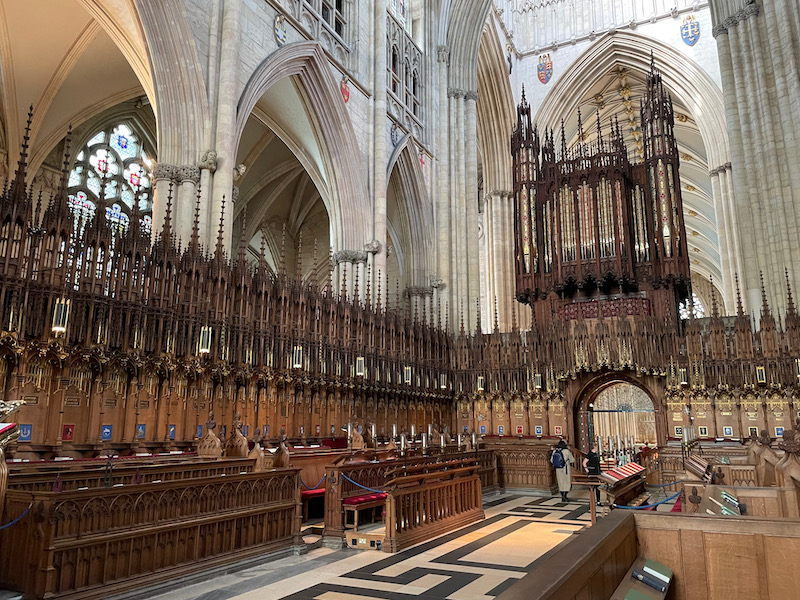
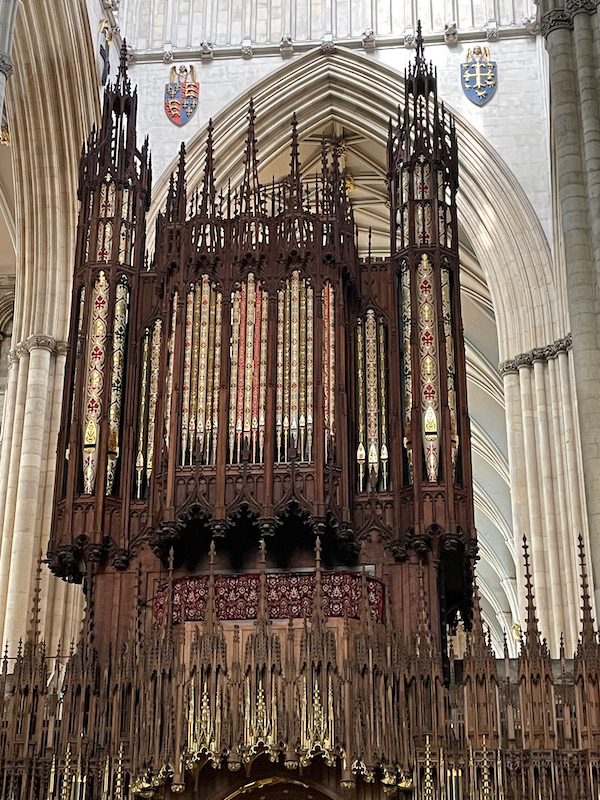
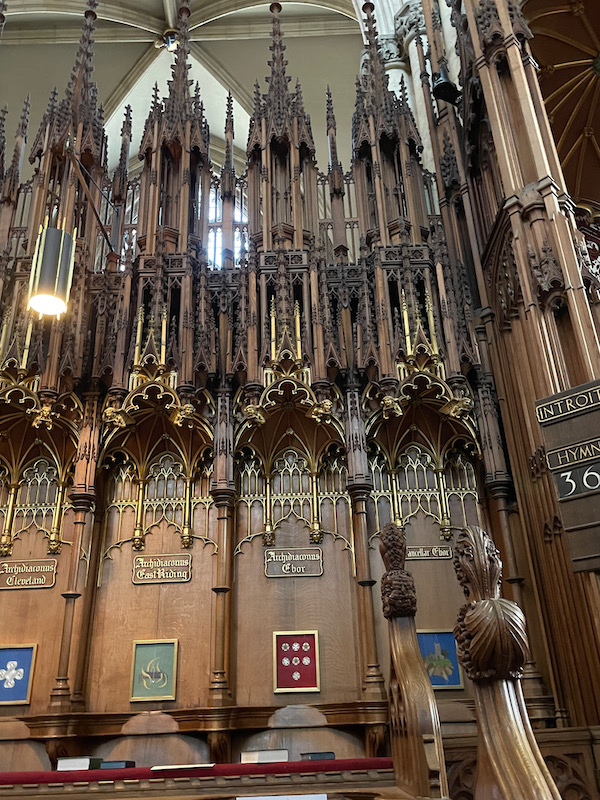
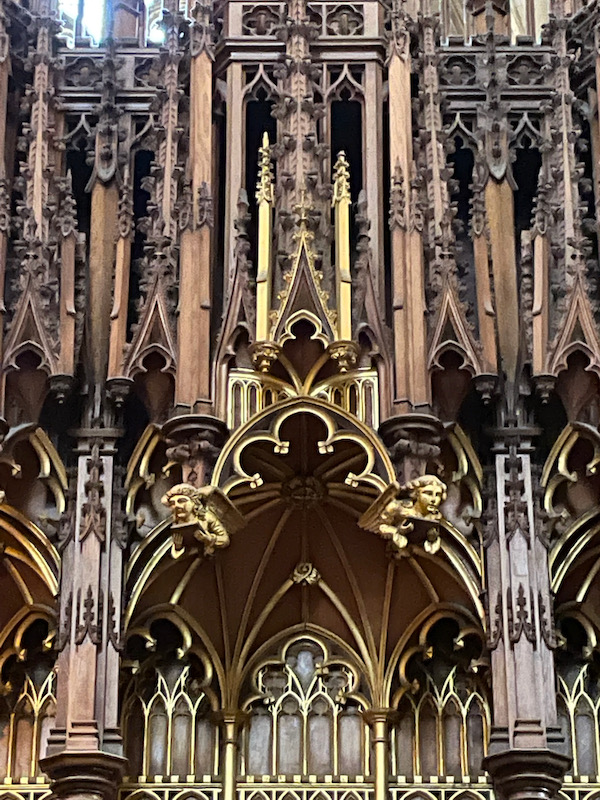
Near the rood screen, in one of the transepts, is some really nice iron work.
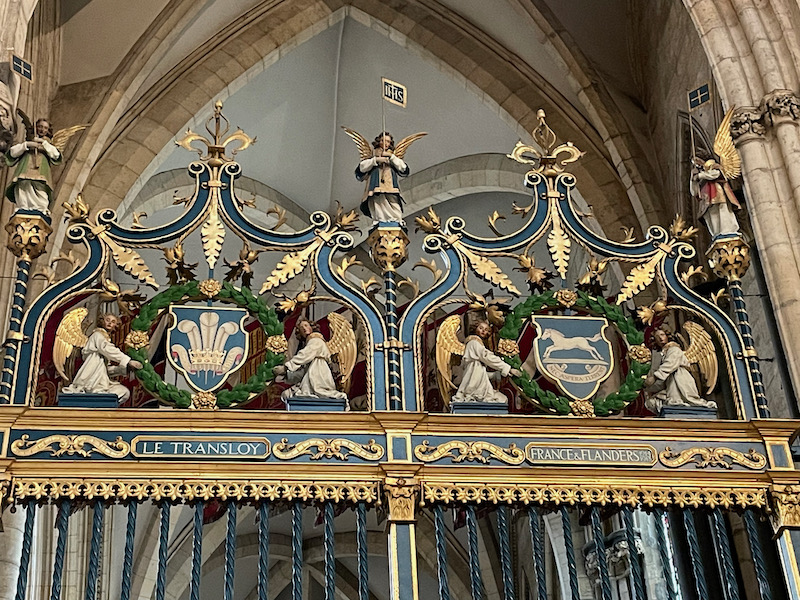
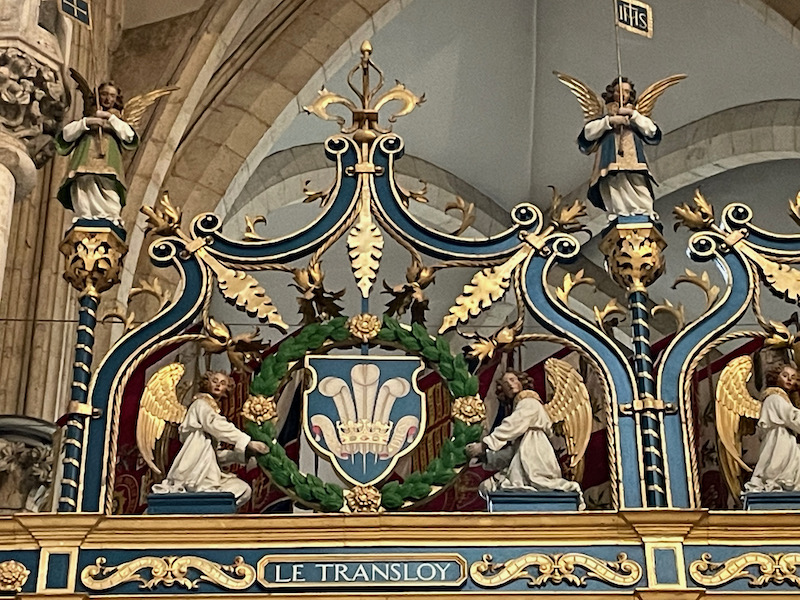
One of York Minster’s architectural gems, the Chapter House contains some of the finest sculptures. The octagonal space dates from the 1280s and has a really nice sixteen-pointed wooden vault, supported by timbers in the roof instead of a central column. This is the earliest example to use this engineering technique. In 1297, the chapter house was used as the location for the Parliament of King Edward I.
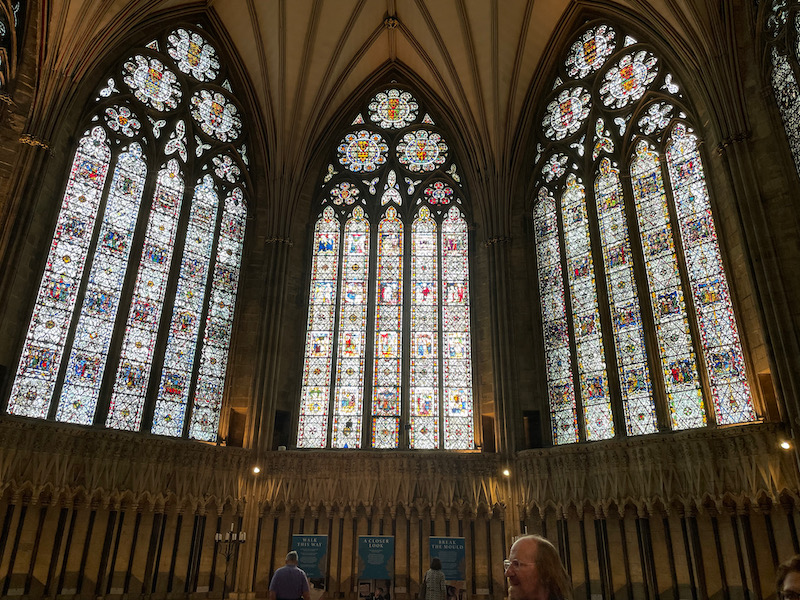
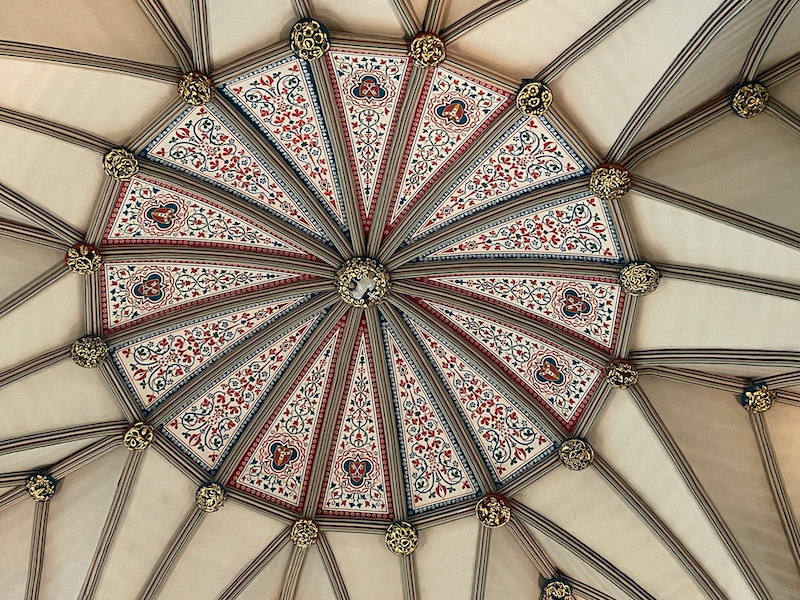
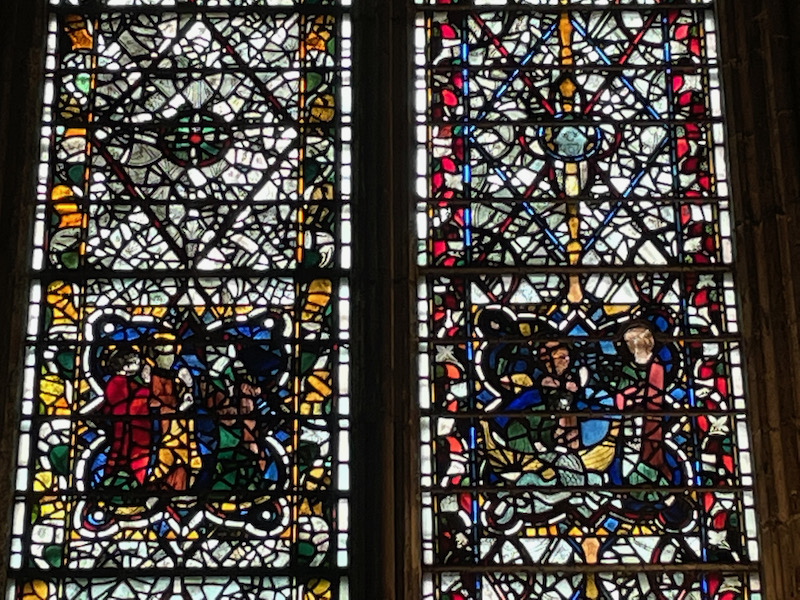
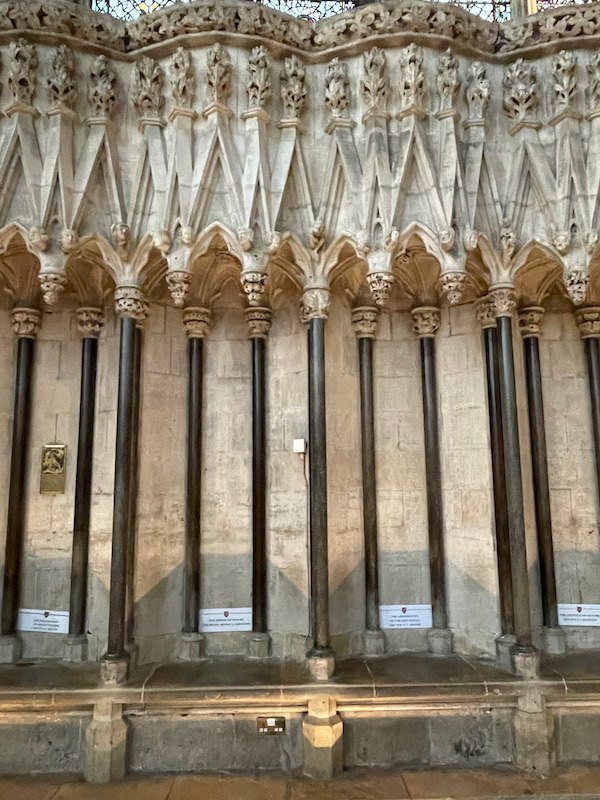
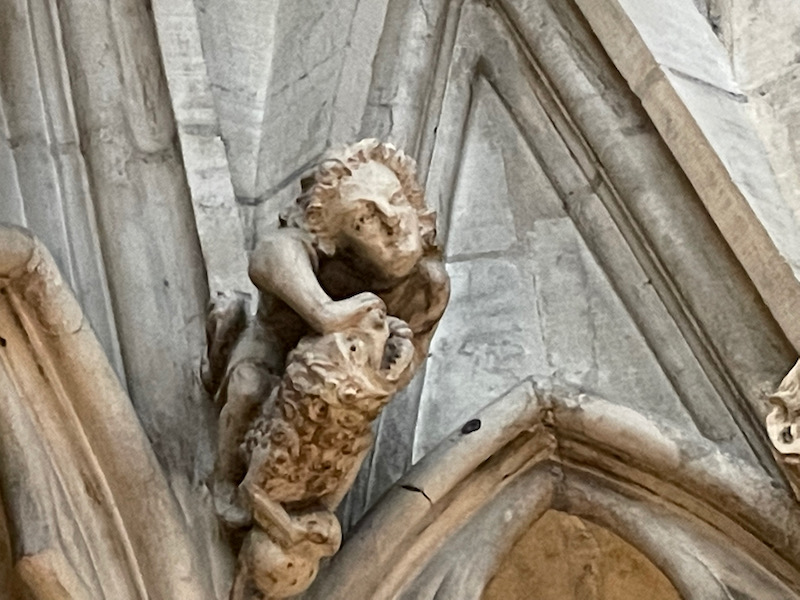
And here we are having a little fun! Jenn was SOO Serious!
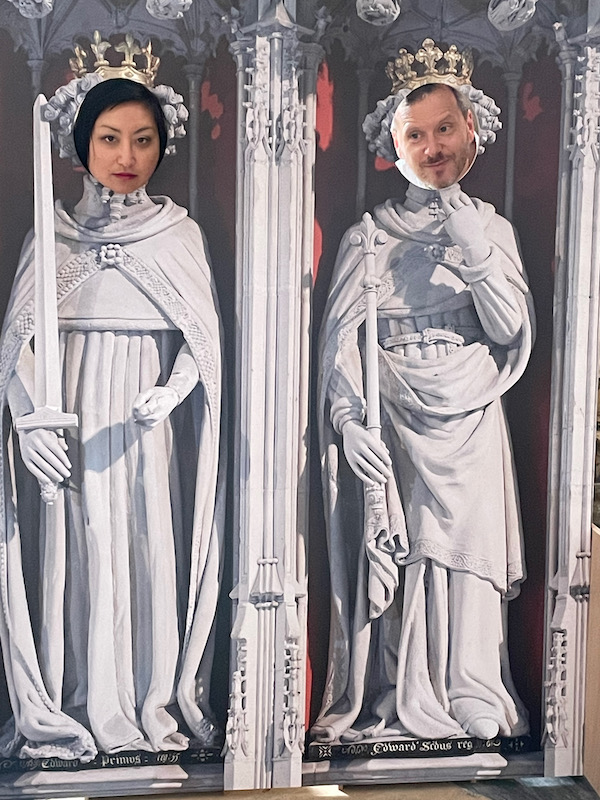
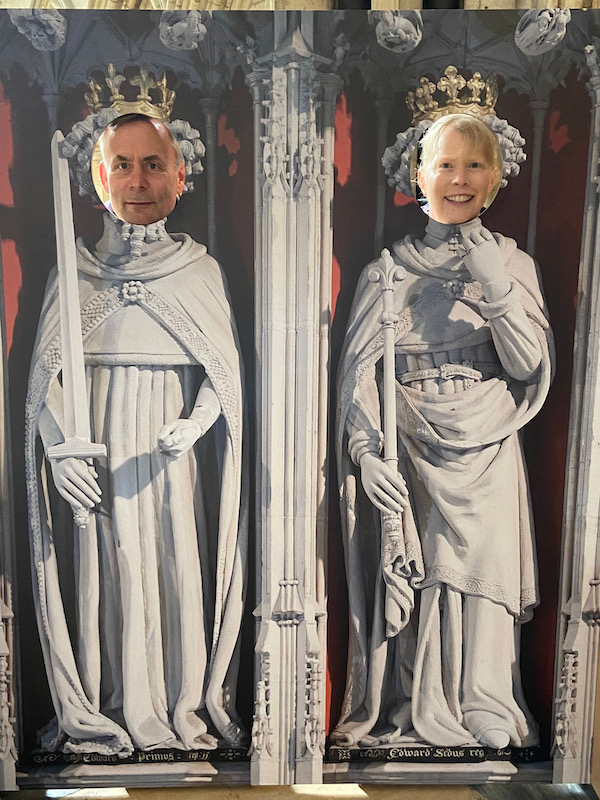
We decided to do the Tower climb, which takes you up 275 narrow steps from the ground to the top of the central tower, which dates from the 15th century. You can get some really nice views of the upper-parts of the exterior as well as views across York. In one place, you can see part of the medieval walls.
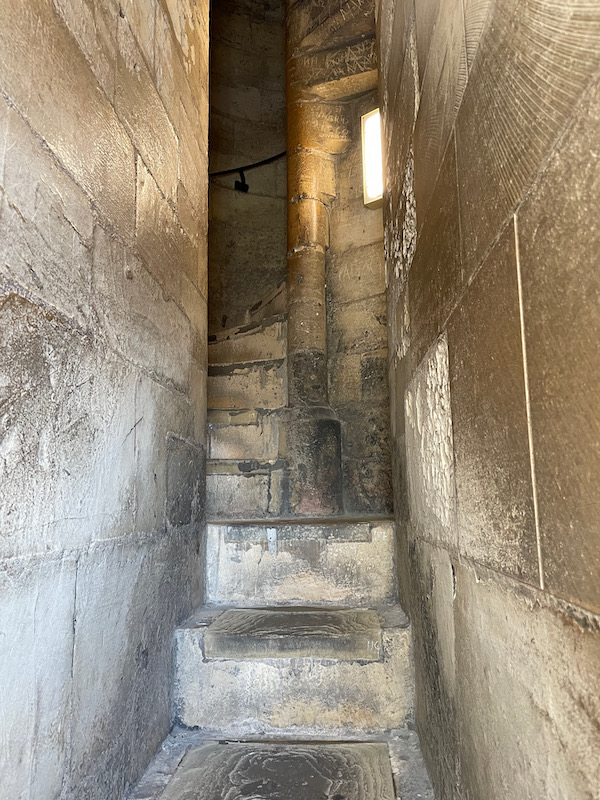
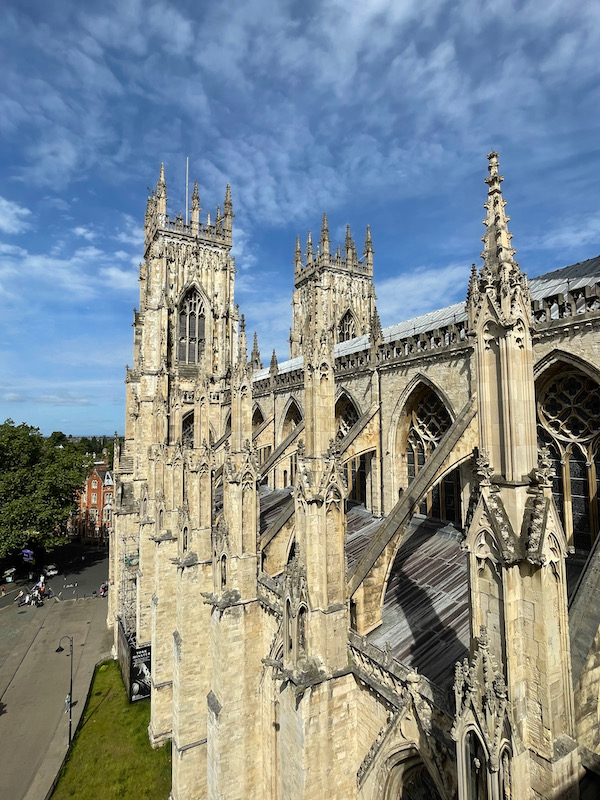
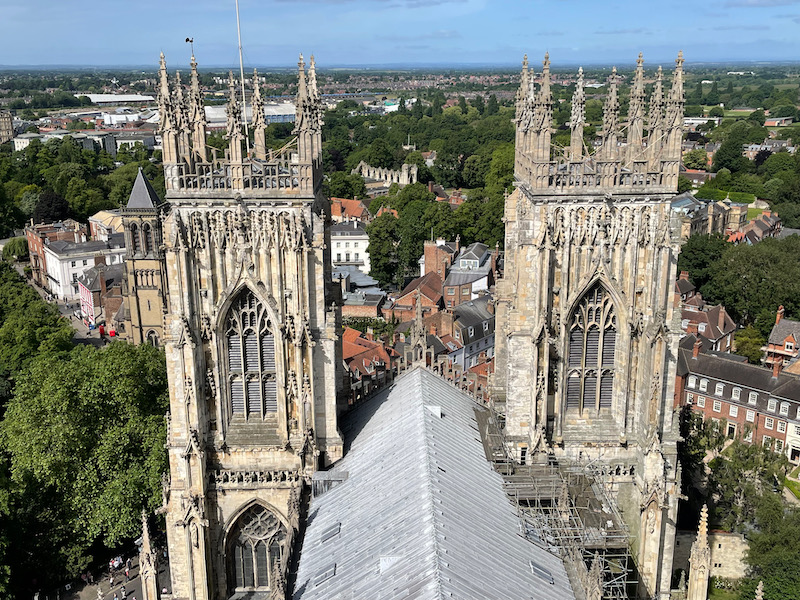
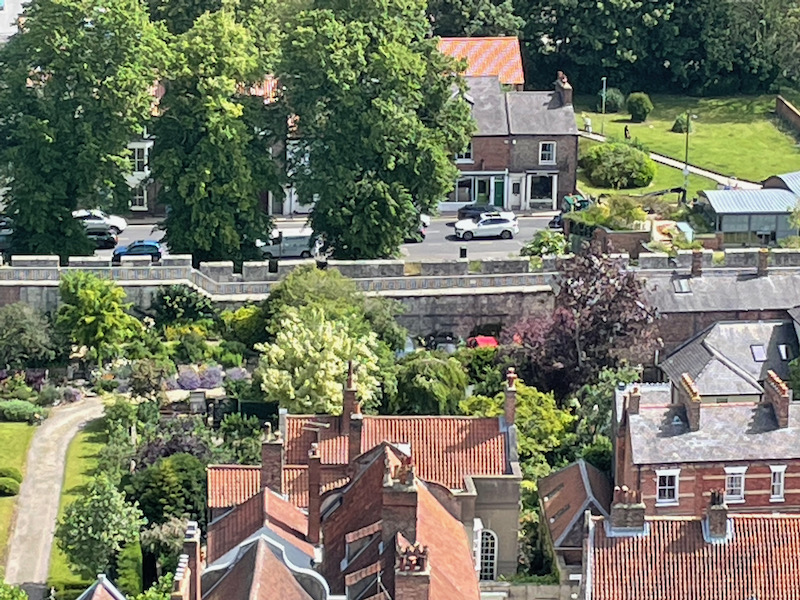
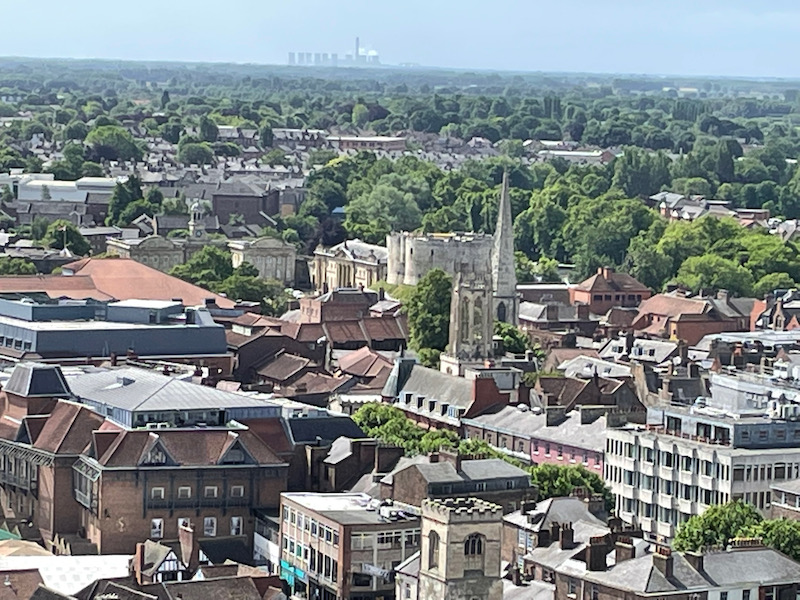
I popped down to the one of the 2 crypts in the cathedral. The Western crypt is just below the choir and is part of the oldest section of the cathedral. It houses the tomb of St William of York, the only saint to be buried at the cathedral, who was canonized in 1227.
